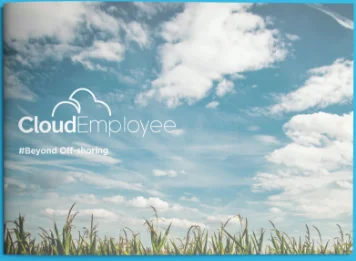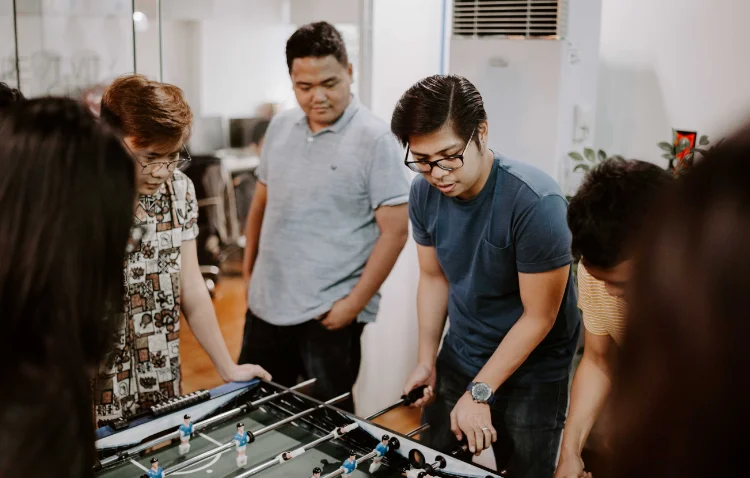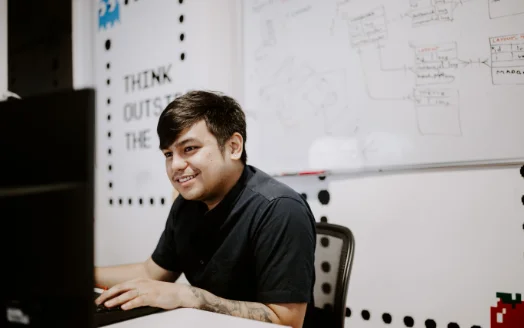Since the industrial revolution up to our present-day society, we all have worked 8-hour shifts, day-in and day-out—five days a week!
Frankly, the routine can get quite tiring. That’s why we need to take regular breaks from work—to disconnect, recharge, and come back refreshed.
In this article, we’ll be talking about:
- Why should we take regular breaks at work?
- What are the negative effects when we don’t take a break?
- How to take breaks at work?
Why should we take regular breaks at work?
In the past, working an 8-hour shift used to be an effective approach. It was a humane effort to cut down the hours of strenuous manual labour workers were subjected to on the factory floor.
But in the context of the modern-day, white-collar employees, it’s outdated and ineffective!
A study conducted by the Draugiem Group used a computer application called DeskTime to track the work habits of employees. The app measured how much time people spent on their tasks and compared it to their productivity levels.
From the study, researchers found the employees’ productivity level results intriguing; the typical length of a workday didn’t really matter—it’s how they structured their day that made an impact.
Specifically, the employees who regularly took microbreaks at work were a lot more productive compared to the people who powered through and worked with minimal breaks.
The results of their study aren’t surprising, nor are they new—our focus and energy naturally ebb and flow.
Biologists call this as a part of Chronobiology—a field in Biology that examines the cyclic phenomena in living organisms. The study includes, but are not limited to, comparative anatomy, physiology, genetics, molecular biology, and behaviour.
That’s why we have periods of focus and high energy—an increased level of productivity, followed by a decline, or an ebb.
Now, it is annoying, but that’s the sad reality—we’re not robots.
So here’s a simple workaround to our biological limitations: we should actually take regular breaks at work.
Related Article: Is failure the key to career growth?
The negative effects when we don’t take a break
Before we start about how to take microbreaks at work and what the amazing benefits of having a break at work are, let’s talk about why it’s crucial to take regular breaks.
Now, the list isn’t long but adverse effects have a funny way of impacting our lives later on:
First in the list is decision fatigue.
Decision fatigue refers to the idea that our willpower to make sound decisions deteriorates in quality as we deplete our limited mental resources throughout the day.
As Jonathan Levav, Associate Professor of Business, from Stanford University puts it:
“Decision fatigue helps explain why ordinarily sensible people…can’t resist the dealer’s offer to rustproof their new car.”
The effects of decision fatigue— reduced the ability to make trade-offs, decision avoidance, impulse purchasing, and impaired self-regulation—are subtle in the beginning and later snowball into bigger problems.
Roy Baumeister and Kathleen Vohs, co-authors of several studies on decision fatigue, willpower, and self-control, suggest that decision fatigue has disastrous effects on a person’s private life.
This suggestion can be interpreted in a lot of ways. A popular example, as portrayed in soap operas: people in positions of power are prone to dalliances later in the evening.
Second, and we’re all familiar with this: lack of focus.
We’ve all been there. There are days when we would sit in front of our laptops staring at our screens, internally trying to muster a shred of energy and motivation to get the job done.
No matter how hard we force ourselves to concentrate on our tasks and try to squeeze out even a drop of motivation—we just can’t!
On the bright side, self-discipline will help us get back on track. But, remember, our lack of focus is just a symptom of the real problem: we’re tired.
Last, but not least: damaged eyes.
We’re always on our computers and smartphones—all day even. We do our work and leisure on our devices and (no surprise) that leads to damaged eyes that continuously gets worse.
When we stare at the screen, our blink rate decreases. In proportion to that, our tear production—the part of our eyes that keeps them lubricated—also decreases. This easily leads to dry and tired eyes that eventually leads to blurry vision—and a pricey new pair of glasses.
These negative effects might not be considered as a big deal for some but keep in mind everything starts as minute things before snowballing into something bigger—like burning out because of work.
Related Article: How a Clean Desk Keeps You from Being Stressed at Work
How to take breaks at work
To hopefully avoid any of these negative effects, with the exception of those who already abuse their eyes (myself included), let’s talk about how to take breaks at work. This includes: how often we should take breaks and what microbreak activities we can do at work are.
So, how often should we take breaks at work?
It’s not set in stone on how many minutes we should take a break—since results differ depending on a lot of factors:
- A study written by Atsunori Ariga and Alejandro Lleras, from the University of Illinois, suggests taking regular breaks once every hour.
- An article by Inc. Magazine suggests taking microbreaks at work should be every 60 to 90 minutes.
- DeskTime, a time-tracking app, says it’s best to have 52 minutes of work and 17 minutes of break
- Robert Pozen, from the MIT Sloan School of Management, suggests taking a break every 75 to 90 minutes, based on a study about professional musicians.
- And the popular Pomodoro Technique—a tomato-shaped timer—promotes doing tasks within a 25-minute window followed by a 5-minute break.
Just remember, it’s not about the exact number. It’s about the quality of how we take regular breaks that will help us reap their benefits.
What are the microbreak activities we can do on our breaks?
There’s a lot of microbreak activities we can actually do during our breaks. Just remember, the goal is to come back recharged. Or as Alejandro Lleras, professor of Psychology, puts it:
“Deactivating and reactivating your goals allows you to stay focused.”
To better explain that, here’s what Hengchen Dai from the Wharton School of the University of Pennsylvania has to say:
“Based on past research, we would expect that the more relaxed and disengaged from work people feel during a break, the more likely they will be to benefit from taking time off.”
In short, we shouldn’t do any work during our breaks—and checking emails doesn't count as a break either.
So here are a couple of microbreak activities that what we can do:
1. Move around or stretch
Sitting all day is bad for our health. But it’s the unavoidable devil in our lives since most of everything we do now involves sitting in front of a screen—to a point where we practically have our butts glued to the seat.
A little bit of movement during our break would be good for us. While some would opt to have a workout to get the blood pumping, a quick 5-minute walk will do just as well.
2. Take a nap
The power of a good nap is undeniable. In fact, a study published in Nature Neuroscience shows that naps can change our perception and mood throughout the day.
But how long should we take a nap for?
Jennifer Ackerman, author of Sex Sleep Eat Drink Dream: A Day in the Life of Your Body, wrote an insightful guide on how we can catch some Zs:
- A quick cat nap (for around 20 minutes) makes us more refreshed and energised with a little boost in our moods. Drinking a cup of coffee before taking a cat nap will give us that much needed extra boost as well.
- A 45-minute nap can help us in creative thinking—something to keep in mind when we’re brainstorming for some fresh ideas.
- And a 90 to 120-minute nap completes the human sleep cycle. Which gives us much more energy to take on our remaining tasks for the day.
3. Have a coffee break
Drinking coffee is good for our productivity. Specifically, caffeine—found in tea and coffee drinks, to name a few—keeps us alert, helps regulate our stress levels, and keeps us active.
While this little tidbit gives us a reason to reach for another cup of our socially-acceptable drug, there are golden windows throughout our day that’s the best time to drink coffee. Our first coffee break should be between 9:30 and 11:30 in the morning. Our second one—when we really need that extra caffeine boost—should be around 1:30 and 5:30 in the afternoon.
Related Article: How to Stay Motivated at Work When Things Become Unbearable
The importance of taking a break
Within our daily 8-hour shifts, we have about an hour to eat our lunch, and maybe an additional 15-minute break for others. While this is already enough for some to get back to work and keep at it until the end of our shifts—this isn’t the case for everyone.
Our energies naturally ebb and flow. Some people can power through the moments when our energies and focus ebb—but it’s not commendable.
Studies from diverse academic disciplines suggest that having microbreaks at work is vital for our holistic well-being—with plenty of benefits to boot as well.
Sadly, it’s a part of our culture to perceive people who take regular breaks as lazy, dawdling about instead of working on their tasks.
Just remember we’re not robots. We all need to disconnect, even for just a moment, to get back to work and bring the best we can give to the table.
Strike the perfect balance of work and rest! Join our growing team at Cloud Employee! Send us your updated CV to [email protected] with the position you're applying for in the subject line. Follow us on Facebook, Twitter, and LinkedIn or check our Careers page for our latest updates and job postings.
Work with world leading tech businesses
We connect high-performing software engineer talent in the Philippines with some of the world’s leading and most innovative Tech companies.
Submit CV













